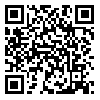Volume 5, Issue 4 (1-2022)
ohhp 2022, 5(4): 319-334 |
Back to browse issues page
Alireza Askarian 

 , Mahnaz Mirza Ebrahim Tehrani *
, Mahnaz Mirza Ebrahim Tehrani * 

 , Seyed Mohammad Taghi Sadatipour
, Seyed Mohammad Taghi Sadatipour 

 , Seyed ali Jozi
, Seyed ali Jozi 

 , Reza Marandi
, Reza Marandi 




 , Mahnaz Mirza Ebrahim Tehrani *
, Mahnaz Mirza Ebrahim Tehrani * 

 , Seyed Mohammad Taghi Sadatipour
, Seyed Mohammad Taghi Sadatipour 

 , Seyed ali Jozi
, Seyed ali Jozi 

 , Reza Marandi
, Reza Marandi 


Department of Environment, North Tehran Branch, Islamic Azad University, Tehran, Iran
Abstract: (1031 Views)
Introduction: Analyzing the causes of accidents in order to control and prevent their recurrence is of utmost importance. The aim of this study was to combine the two methods of Fishbone and SCAT to analyze the root cause of the accidents, address them in details, and track them in the depth of organizational structures.
Methods: This study analyzed the data about accidents using a Fishbone and SCAT Combined Method. Initially, the interface and root causes obtained by the Fishbone Method, as well as control measures were entered into SCAT cause and effect table. The results of the questionnaires were collected, and the causes of accidents were investigated using the Chi-Square test. Data analysis was done using SPSS software version 24.
Results: The findings indicated that the most important direct cause of the accidents was the the variable related to indoor and outdoor environment of the refinery, and the most important root cause of the accident was “unforeseen economic changes such as changing exchange rate, tax rate”, and “lack of a continuous planning for the staff's training”. Increasing the efficiency of training the staff is the most important control measure suggested. There was also a significant relationship between surface and root causes.
Conclusions: According to the statistical test, a systematic connection between root causes and intermediate causes of the accident were found. The combined method presented in this study can meet the needs of different organizations regarding the causes of accidents in many cases, and is currently one of the most important methods. Therefore, it is suggested to combine the SCAT with other methods to analyze the causes of accidents in refinery plants.
Methods: This study analyzed the data about accidents using a Fishbone and SCAT Combined Method. Initially, the interface and root causes obtained by the Fishbone Method, as well as control measures were entered into SCAT cause and effect table. The results of the questionnaires were collected, and the causes of accidents were investigated using the Chi-Square test. Data analysis was done using SPSS software version 24.
Results: The findings indicated that the most important direct cause of the accidents was the the variable related to indoor and outdoor environment of the refinery, and the most important root cause of the accident was “unforeseen economic changes such as changing exchange rate, tax rate”, and “lack of a continuous planning for the staff's training”. Increasing the efficiency of training the staff is the most important control measure suggested. There was also a significant relationship between surface and root causes.
Conclusions: According to the statistical test, a systematic connection between root causes and intermediate causes of the accident were found. The combined method presented in this study can meet the needs of different organizations regarding the causes of accidents in many cases, and is currently one of the most important methods. Therefore, it is suggested to combine the SCAT with other methods to analyze the causes of accidents in refinery plants.
Type of Study: Research |
Subject:
HSE
Received: 2020/07/19 | Accepted: 2022/01/24 | Published: 2022/02/2
Received: 2020/07/19 | Accepted: 2022/01/24 | Published: 2022/02/2
| Rights and permissions | |
 |
This work is licensed under a Creative Commons Attribution-NonCommercial 4.0 International License. |

